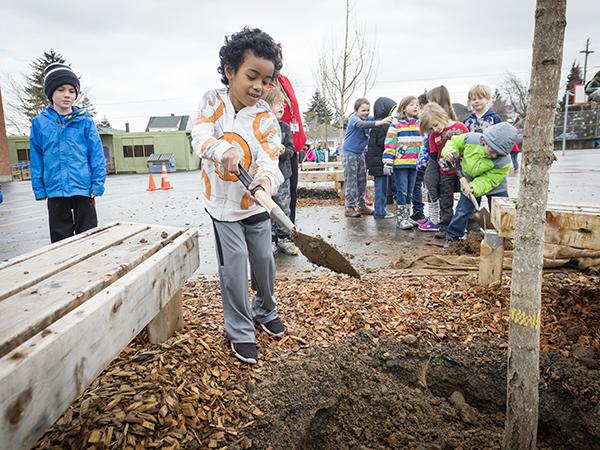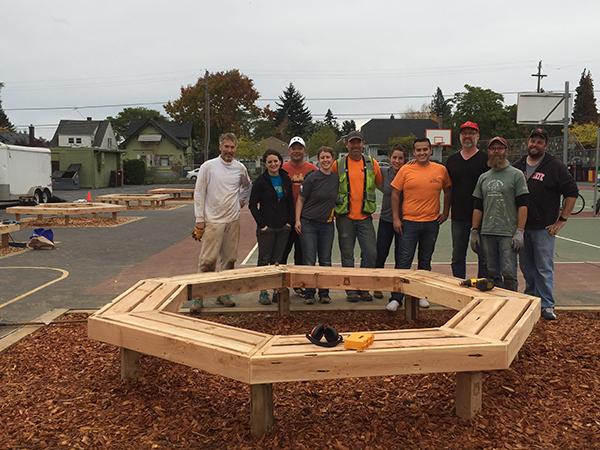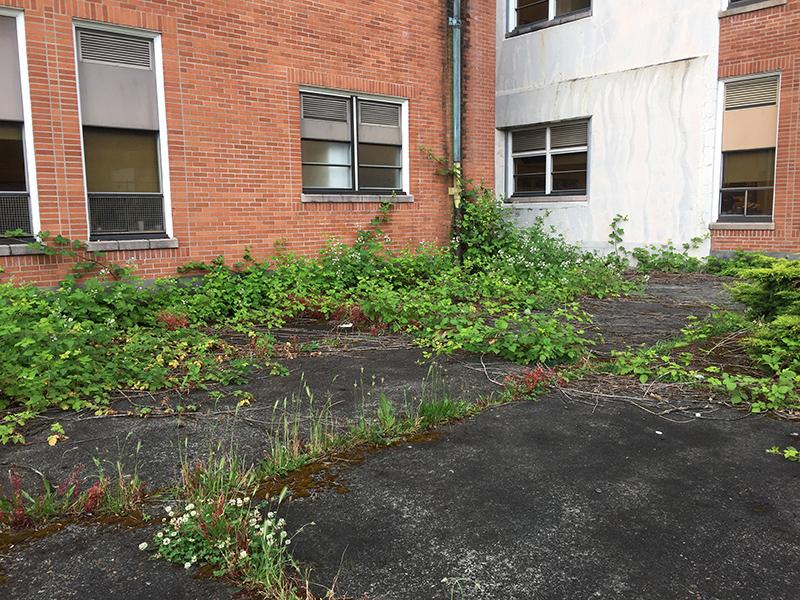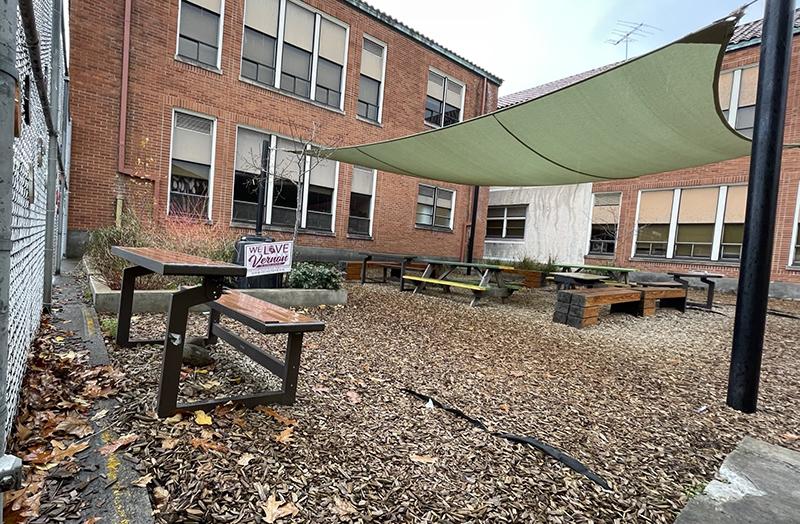At Vernon IB World School, the Estuary Partnership worked with the community to improve the schoolyard by removing more than 1000 square feet of pavement, adding trees and seating, and transforming a courtyard into an outdoor classroom that infiltrates polluted runoff.

Vernon School in Northeast Portland offered students very limited green space to play and almost no shade on its largely paved playground.
In 2016, the Estuary Partnership began a project to transform this schoolyard.
Phase 1
In September 2016, nonprofit Depave led a volunteer event with the school community to remove 1,008 square feet of asphalt from the schoolyard to make room for six new trees and benches.


Kindergarten and 1st grade students helped out planting large trees in the depaved squares to add shade to the playground and create new habitat areas for birds and other species.
Partners from Open Architecture PDX and Turner Construction helped pro bono by designing and building a series of benches, so teachers and students have a place to rest. The six benches are a series of polygons (triangle, square, pentagon, hexagon, heptagon, and octagon) to acknowledge Vernon's status as an International Baccalaureate program.
In addition, 4th grade students got a hands-on lesson on stormwater and how their schoolyard is connected to the Columbia Slough from Estuary Partnership Environmental Educators.

Phase 2
In 2019, we returned to make further improvements to the Vernon schoolyard.
A courtyard on the school grounds was overrun with non-native Himalayan blackberry growing through its asphalt, and so was completely unused by students or teachers. This area was previously depaved during phase 1 of the project, but had been lying unused since then.


In partnership with Learning Landscapes and Verde Builds, the Estuary Partnership created a wood chip surface with shade sails to act as an outdoor classroom - a helpful addition to the school during COVID.
Through this project, we also built two planters to filter runoff from the 2,200 square foot school roof adjacent to the area, providing a place where students can learn directly about why filtering stormwater is so important.









